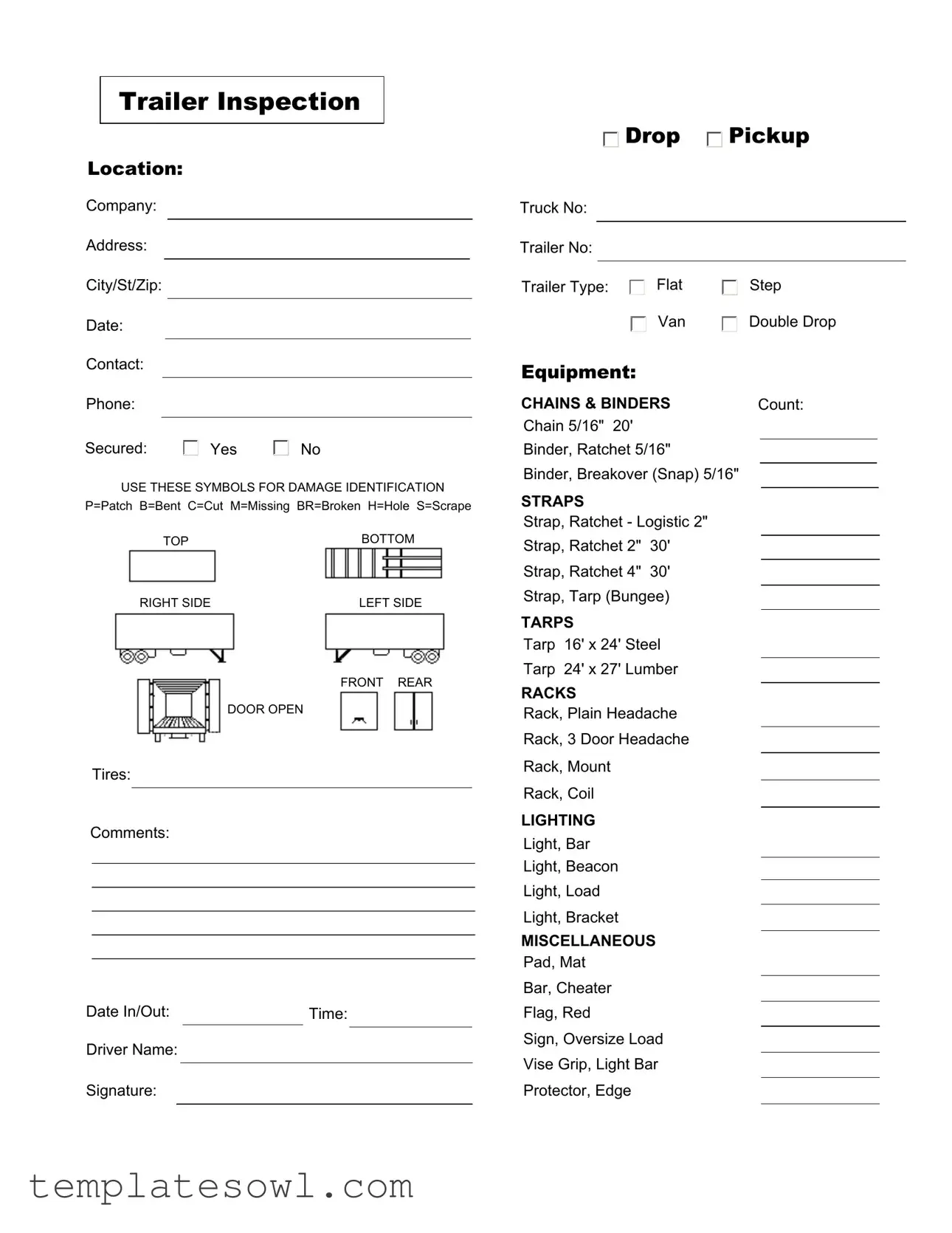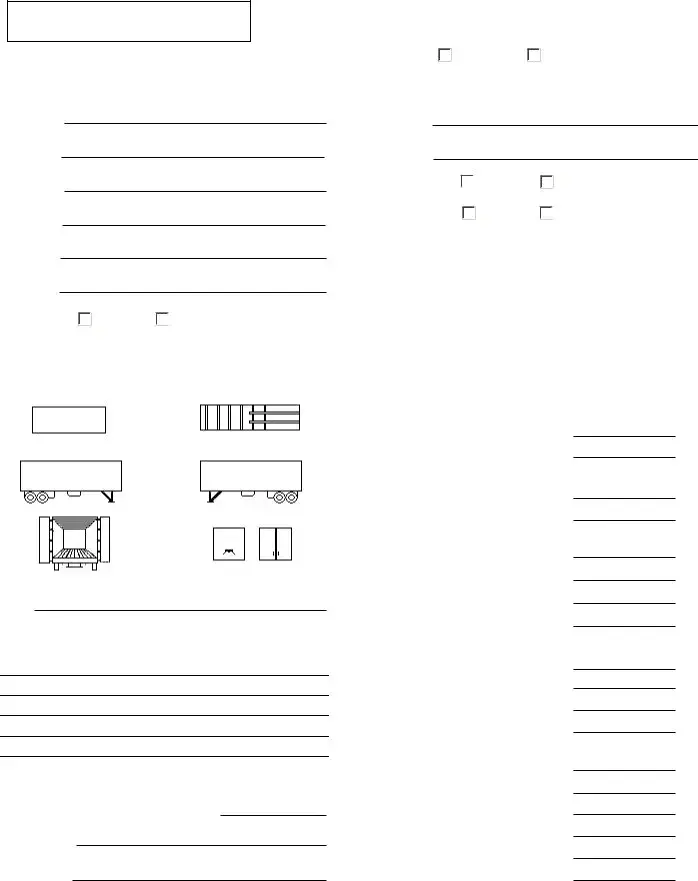What is the purpose of the Trailer Inspection form?
The Trailer Inspection form serves as a detailed record of the condition and equipment of a trailer before it is used. It helps ensure that all trailers are safe for transportation and meet the necessary standards for operation.
What information do I need to fill out on the form?
You will need to provide details such as the trailer inspection location, pickup company, address, date, contact information, truck and trailer numbers, type of trailer, and equipment on board. Make sure to also include the driver’s name and signature.
How do I indicate damage on the Trailer Inspection form?
The form includes specific symbols for identifying damage, such as 'P' for Patch, 'B' for Bent, 'C' for Cut, 'M' for Missing, 'BR' for Broken, 'H' for Hole, and 'S' for Scrape. Use these symbols in the designated sections to clearly indicate any damages found during the inspection.
What should I do if I find damage during the inspection?
If you discover any damage, it is crucial to document it on the form using the provided symbols. Then, communicate this information to the relevant personnel for assessment and necessary repairs before the trailer is put into use.
What should I enter in the 'Tires' section?
In the 'Tires' section, provide comments about the condition of the tires. Note any issues such as wear, damage, or inflation problems. This information is vital for ensuring safe towing.
What types of equipment should I count on the form?
You should include all relevant equipment, such as chains, binders, straps, tarps, and lighting. Be sure to count each item carefully to ensure that all necessary equipment is available and in good condition.
How do I record the date and time on the form?
Fill in the 'Date In/Out' section with the relevant dates for when the trailer is taken for inspection and when it is returned. For the time, record when the inspection starts and when it ends. Accurate records help maintain tracking and accountability.
Why is the driver's signature important?
The driver's signature verifies that the inspection was conducted and that the information provided is accurate. This signature confirms that the driver acknowledges the trailer's condition and any issues that have been documented.

